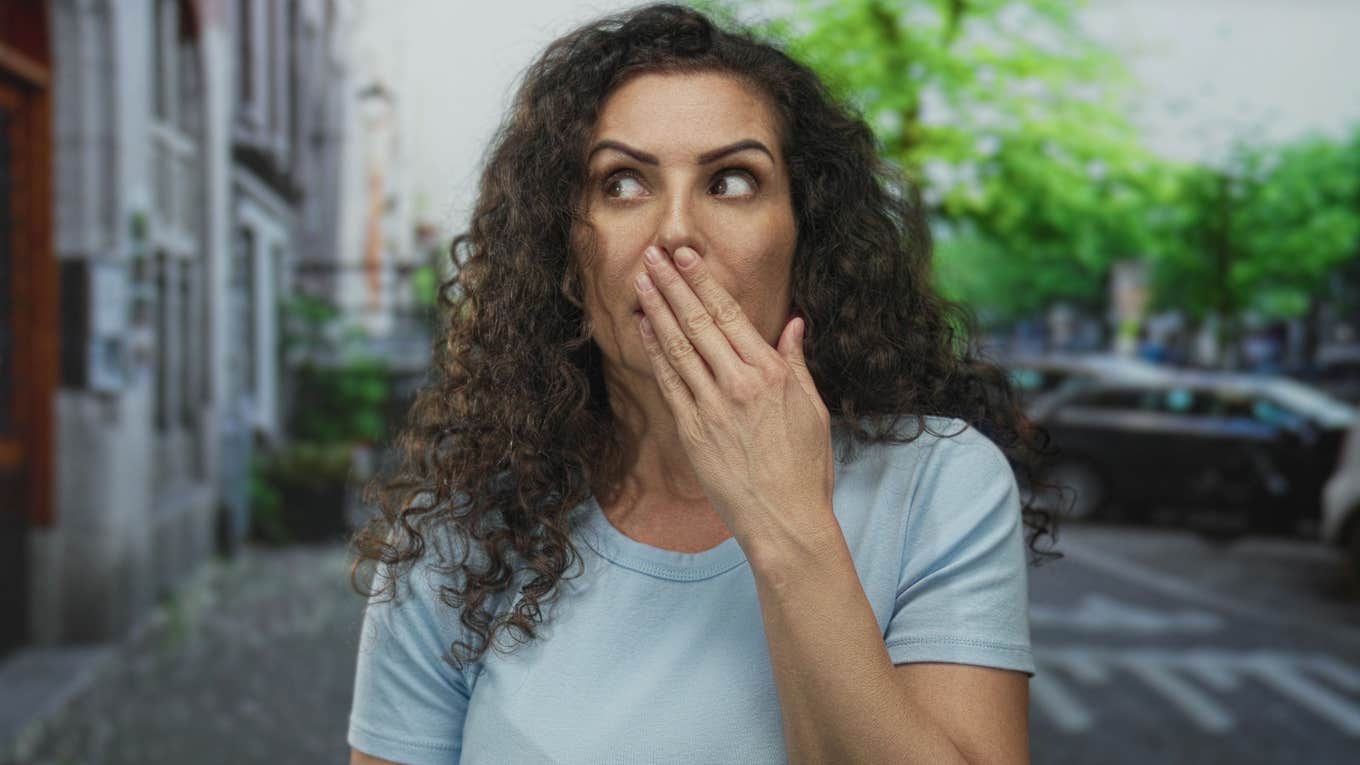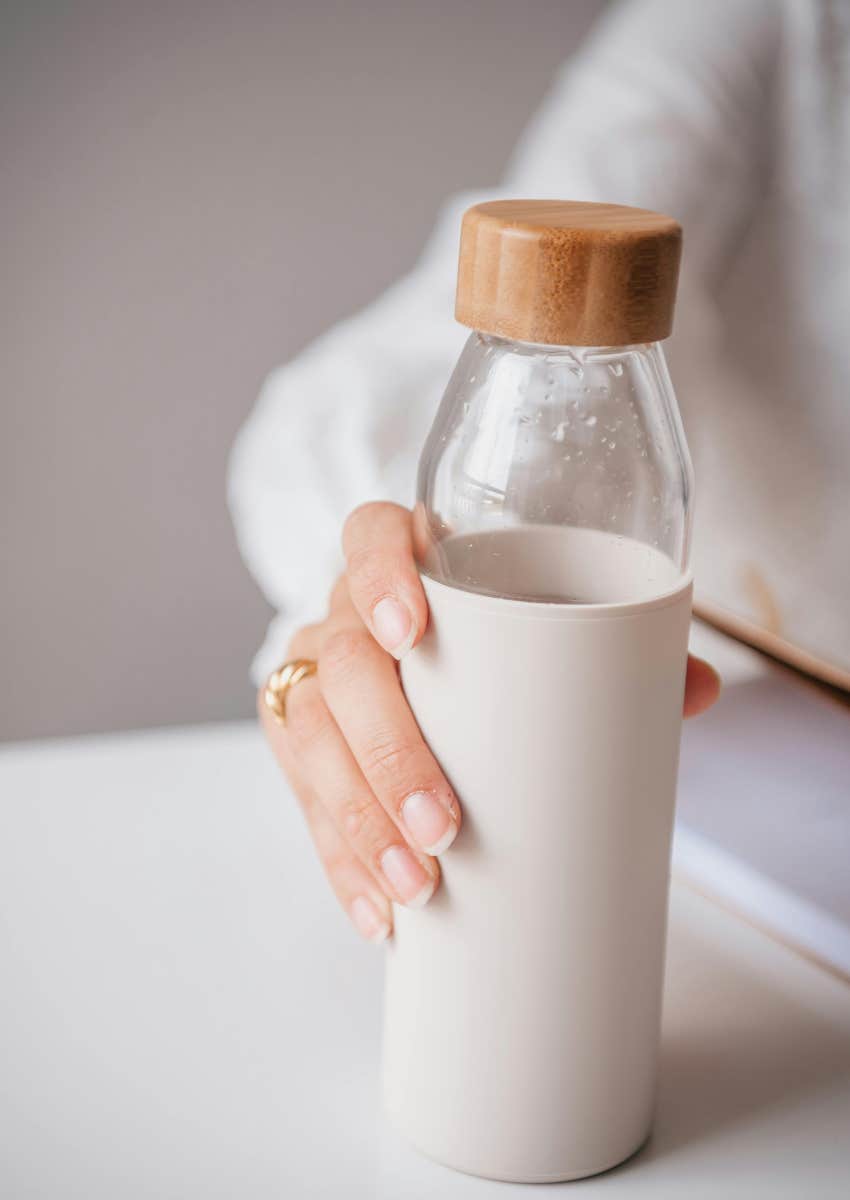This One Thing That Touches Your Mouth Every Single Day Is Most Likely Dirtier Than Your Toilet, According To Scientists
It can contain 10 times the CFUs (colony-forming units) of bacteria than a toilet seat.
 Krakenimages.com | Shutterstock
Krakenimages.com | Shutterstock There’s a pretty good chance that you would never let your toilet touch your mouth. I mean, that’s disgusting, right? In fact, emergency physician Dr. Joe Whittington told the Daily Mail that the average toilet seat has “50 colony-forming units (CFUs) of bacteria per square inch.”
Believe it or not, there’s something that touches your mouth multiple times a day that’s even dirtier. A study from Purdue University found that three out of five of the items they tested had over 500 CFUs per milliliter. Comparing that to a toilet seat makes the toilet seem downright sanitary.
If you use a reusable water bottle, it’s probably dirtier than your toilet.
The study was published in the journal Food Protection. Earth.com staff writer Eric Ralls reported on it for the outlet. According to him, the study aimed to take a specific look at college students’ water bottles. The odds may have been stacked against them because, let’s be honest, college students are not known for their tidiness.
 Miriam Alonso | Pexels
Miriam Alonso | Pexels
Nevertheless, 50 to 81% of college students say that they use reusable water bottles, so it was worth looking into. The researchers collected 90 different bottles straight from students, and also included two brand-new bottles from a store as a control. They performed two different tests that examined both the inside and outside of the water bottles to determine how dirty they were.
The first test was performed on the outside of the bottles and is known as an ATP test. It basically causes any “organic residue” that’s left behind to glow, and is often used in food safety, according to Ralls. All of the water bottles failed the ATP test, and those that were refilled regularly performed even more poorly because “each refill adds touchpoints.”
The second test was for the inside of the bottles. This is where the CFUs came in as a way to measure the live bacteria potentially living inside the bottles. Usually, somewhere around 100 to 500 CFUs per milliliter is considered acceptable. Ralls explained, “In this study, about seven out of 10 bottles cleared 100, about two out of three topped 200, and three out of five exceeded 500.”
What does this mean for people trying to save some money or protect the environment?
Reusable water bottles are touted as being a good option both for those who are frugal and those who are environmentally conscious. Boston University estimated that most Americans can save around $1,350 if they choose to use a reusable water bottle instead of disposable plastic ones.
Additionally, research from the Pacific Institute suggests it takes 2,000 times more energy to make a disposable water bottle than it does to use tap water. In case that wasn’t bad enough, Habits of Waste reported that 481.6 billion plastic water bottles are used every year, but only 9% are recycled. Think of how much plastic ends up polluting nature each year as a result of this waste.
For these reasons, reusable water bottles are a good idea. But how do you get past the thought of all of those CFUs?
There’s nothing wrong with using a reusable water bottle as long as you take proper precautions.
Ralls said you start by cleaning them better and more frequently. Just rinsing off your bottle isn’t enough, and not taking it apart to clean it is a big don’t. Instead, you should use hot water, dish soap, and tools like a bottle brush to get the job done. It’s also essential to let the bottle dry completely before closing it again.
 PNW Production | Pexels
PNW Production | Pexels
Carl Behnke, who led the study at Purdue, asked, “Do you wash your dishes after dinner? Yes. But with water bottles, we often take them all over the place and don’t properly clean them.”
The answer isn’t to go back to using disposable plastic bottles. Just keep your reusable bottles squeaky clean.
Mary-Faith Martinez is a writer with a bachelor’s degree in English and Journalism who covers news, psychology, lifestyle, and human interest topics.

